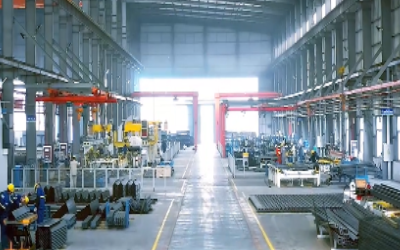New energy storage sector sees fast growth
China's new energy storage sector saw rapid growth in 2024, with installed capacity surpassing 70 million kilowatts, said an official with the National Energy Administration.
Bian Guangqi, deputy director-general of the NEA's energy saving and technology equipment department, said that by the end of 2024, total installed capacity of new energy storage projects in China reached 73.76 million kW, which represented an increase of over 130 percent compared to the end of 2023. The average energy storage duration is 2.3 hours, an increase of about 0.2 hours since end-2023.
New energy storage refers to energy storage technologies other than conventional pump storage. An energy storage system charges when wind power or photovoltaic power generates a large volume of electricity or when the power consumption is low, and it discharges otherwise.
China's operational efficiency of new energy storage continues to improve. Data from the country's grid companies indicate the sector supports the development and consumption of renewable energy, peak supply assurance and the stable operation of the power system, thereby, significantly contributing to the construction of a new power system, Bian said at a news conference on Jan 23.
Geographically, the top five provincial-level regions in China for cumulative installed capacity of new energy storage are Inner Mongolia autonomous region, Xinjiang Uygur autonomous region, Shandong province, Jiangsu province and Ningxia Hui autonomous region. North China represents a major operating region for the sector with its installed capacity accounting for 30.1 percent of the national total, followed by northwestern regions at 25.4 percent, and eastern regions at 16.9 percent.
"In terms of single-power station-installed capacity, new energy storage plants are increasingly exhibiting a trend toward centralization and large-scale operations," Bian added.
By the end of 2024, projects with an installed capacity of 100,000 kW or above accounted for 62.3 percent of the total, a rise of approximately 10 percentage points from 2023, while projects between 10,000 and 100,000 kW made up 32.8 percent, and those below 10,000 kW stood at 4.9 percent.
Regarding storage duration, the share of new energy storage projects with a duration of four hours or more increased to 15.4 percent in 2024, up by about 3 percentage points since the end of 2023. Projects with storage durations between two and four hours represented 71.2 percent, while those with durations of less than two hours accounted for 13.4 percent.
"New energy storage plays an essential regulatory role in the new power system, significantly promoting the development and consumption of renewable energy," Bian said.
New energy storage features a high intensity of technology and a long industrial chain, and encompasses multiple sectors. It has nurtured numerous innovative enterprises, facilitated breakthroughs in key technologies, and promoted industrial quality and efficiency, said the official.
Moreover, the flexible layout and short construction cycle of new energy storage, along with its wide range of application scenarios, have directly driven investments nearing 200 billion yuan ($27.5 billion) during the 14th Five-Year Plan (2021-25), fostering industrial clusters and becoming a new engine for economic development, Bian added.
As China strives to achieve its dual carbon goals, the country is vigorously developing a green economy, with renewable energy as one of the engines, which provides robust demand for the new energy storage industry.
Bian said that the NEA will systematically draft the roadmap for the 15th Five-Year Plan (2026-30) with intensified efforts to promote technological innovation in new energy storage.








